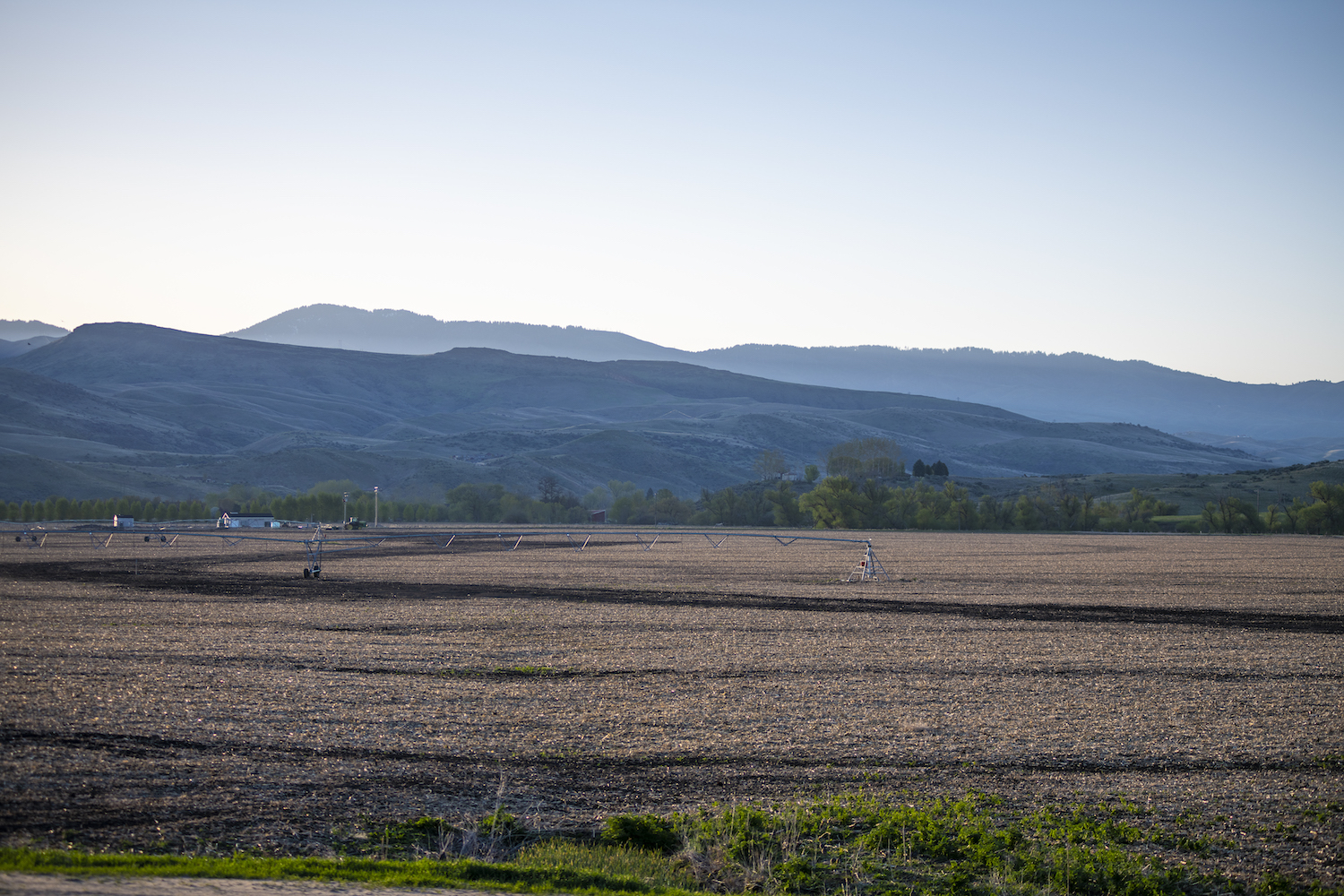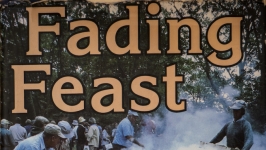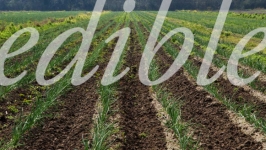Local Voices: A Community Reflects on Development and Land Loss
As a cook, my world revolves around food. When I first got into the kitchen it was all about honing technique and the adrenaline of a busy night’s service. As the culinary world opened, I experienced new ingredients and the very real difference of thoughtfully raised food. My mentors instilled the importance of not only sourcing locally and seasonally but really getting to know where your product is coming from and who it’s coming from. I have met dozens of genuine and amazing farmers in the Treasure Valley who have allowed me to do what I love to do.
Sure, kitchen work can be grueling at times, but restaurants are just highlighting and accentuating the harder work the farms have already done. We all know there needs to be a massive change in how and what we eat in this country and it starts with understanding where good food comes from.
Every once in a while, I get to take my 2-year-old out to the farms. He wanders and explores and tries almost everything he’s offered. His eyes light up from the natural sweetness of a ripe strawberry; his smile is contagious as he carries home his sweet pepper bounty.
I will not claim to know too much about the battle between development and land loss, but I do know I want my son to keep having those experiences with good food and good farms.
—Kris Komori, James Beard Award–nominated chef at State & Lemp
Farmers see bare land and think “food could be grown here.” It doesn’t matter how big the spot is. The three-foot-wide patch of grass between the sidewalk and the road turns into rows of red and emerald oak leaf lettuce. A city park surrounded by cracked blacktop becomes an apple orchard. We can’t help it.
I personally farm on an eighth of an urban acre that used to host a cigar factory. It’s not exactly ideal farmland.
So when land is actually, well, suitable for farming—meaning it has rich, healthy soil and a history of feeding a community—we wonder why, why, why would it be developed into anything other than crisp radishes, heirloom tomatoes and Basque fry peppers? Why would we ask land that supported a three-sisters garden to tolerate a three-car garage?
As actual healthy farmland continues to be developed and built upon, we’re forced to grasp at any patch of bare earth we can find. We are desperate.
Our cities grow to accommodate more people living and working—but not eating. Access to land for agricultural use is perhaps the largest hurdle farmers, and particularly young farmers, have to face. That’s why we see the mini sidewalk farm and the urban park-turned-orchard. We want to snatch up these spaces and protect them from being “lost.” We can’t help it.
—Lettie Stratton is a farmer and freelance writer. She has worked on several small farms in the Treasure Valley and is a co-founder of Hoot ‘n’ Holler Urban Farm.
There is a long-held, if inaccurate, belief that farmland preservation threatens private property rights. Yet the most common approach to farmland preservation, conservation easements, does not in any way challenge the commitment to private property rights. Quite the opposite. Farmland preservation is a voluntary opportunity for farmers to keep their land and simultaneously be paid for it.
The most common approach to farmland preservation is through conservation easements. A conservation easement is purchased by a land trust, usually a public land trust at the county or state level, although there are also private land trusts. What is purchased are development rights, meaning the land trust pays for the land to be permanently excluded from residential or industrial development. The land still belongs to the farmer, who is free to continue to farm, let the land lie fallow or sell it.
What the easement does is preclude a sale to developers at development land prices. The farmer’s ongoing obligation is to not degrade the land. But the farmer in fact receives the development price, which is the difference between the cost of the land for development and the cost of agricultural land.
The farmer ends up with cash (or tax relief if it is more advantageous to donate the development rights to a qualified trust). Senior farmers without heirs who love their land and don’t want their years of stewardship to be destroyed, farmers who are land rich and cash poor, farmers who want to pay for their children’s educations or take a vacation and lack the financial resources to do so—all can be well served without having to sell their land. And when or if the time does come to sell the land, the only restriction is the requirement that the land be conserved in perpetuity as farmland, which typically means sold to another farmer. The added public benefit is that new farmers are able to acquire ag land at affordable prices.
Yet as long as the good people of Idaho believe that farmland preservation somehow tramples private property rights, the hand-wringing over vanishing farmland will continue, and soon the farmland will be gone.
—Susan Medlin, PhD, is a longtime educator and food activist. She is founder of the Foothills School of Arts and Sciences and founding member of the Treasure Valley Food Coalition.
Mid-spring, after the cottonwood have unfurled their leaves and cold Boise River snowmelt has filled the irrigation laterals, you might notice an individual or two walking a fence line or a ditch. They take country-sized steps until they pause, scan the ground and then fall quickly, as if pouncing on some discovered prize. They are probably picking wild asparagus, a tradition many residents of agricultural Southern Idaho once took seriously, but has faded as farmland is converted into subdivisions, strip malls or high-intensity monocultures.
The wild asparagus is an indicator crop—it measures the health of the commons, as the harvest requires tolerance of strangers wandering one’s field, a shared restraint at the end of the season (as picking the last spears will kill the plant) and the yearly toil of maintaining irrigation laterals above ground. It requires leaving a little unkempt land between fence rows and along ditches, an appreciation of weedy forbs, enough open space for sunlight, the dispersal of seeds by birds to new sites as old ones disappear.
Some of us are planting asparagus along our neighborhood fence lines, ditches and roadsides. Some plants we share with strangers, with a mix of competition and generosity, leaving notes to not pick spears from the newly planted crowns until they have time to become established.
How many plants could we accomodate in the fallow edges and irrigation laterals of Boise? Tens of thousands. And in doing so we could establish a vision encompassing the old and the new: the asparagus commons.
—Richard Llewellyn is a biologist who grows things on his family’s land in NW Boise.
The Dry Creek Valley Coalition seeks to give the Ada County community a meaningful voice concerning the development of a 1,400-acre portion of the Dry Creek Valley— some of the best agricultural land left in Ada County—where Ada County’s elected officials have failed to do so.
In any democracy, all political power is ultimately inherent in the people. Our elected officials are not endowed with innate authority, but instead serve as representative custodians. Often, politicians forget as much. As such, Article III Section 1 of the Idaho Constitution provides:
“The people reserve to themselves the power to approve or reject at the polls any act or measure passed by the legislature. This power is known as the referendum, and legal voters may . . . demand a referendum vote on any act or measure passed by the legislature and cause the same to be submitted to a vote of the people for their approval or rejection.”
The same citizen sovereignty holds for legislative decisions made by local politicians.
Exercise of the referendum became necessary with the Dry Creek Ranch development approvals when a real estate developer and the Ada County Board of County Commissioners pursued a novel process to change the law, amending the Ada County Code, sidelining citizen participation and outright dismissing the pronounced concerns of local farmers, historians, foothills hikers and bikers, fish and wildlife advocates, neighbors and Ada County residents.
Additionally, Commissioner David (Dave) L. Case failed to disclose campaign contributions from the developer; the county played fast and loose with notice requirements on a public hearing; the county’s development team put exorbitant fees in front of multiple citizens’ records requests; the BOCC denied citizens’ request for reconsideration, denied locals’ request for mediation; Commissioners Jim Tibbs and Case used their position to retaliate against ag advocates voicing concern about the loss of remaining prime agricultural land in Ada County—and on and on. The county commissioners failed to uphold the public trust. More than that, they abused it. Commissioners Case and Tibbs didn’t just fail or refuse to listen to residents, they actively worked to stifle citizens’ voices.
The Idaho Supreme Court has held that the exercise of citizen sovereignty, of direct democracy, “is not an inconvenience created by rabble rousers and malcontents to vex established authority. [It] is a mandate, significant enough to be embodied in the Idaho Constitution, that enables voters to address issues of concern. Sometimes it compels authorities to listen when nothing else will.”
It’s your power, not theirs. But only if you use it.
—Brian Ertz is a local public interest attorney. He also teaches environmental ethics at Boise State University.
Kris Komori | @kriskomori
State & Lemp | @stateandlemp
Lettie Stratton | @lettiestratton
Hoot ‘n’ Holler Urban Farm | @hootnhollerurbanfarm
Foothills School of Arts and Sciences
Treasure Valley Food Coalition | @treasurevalleyfoodcoalition
Dry Creek Valley Coalition | @savedrycreek
Dry Creek Ranch
Ada County Board of County Commissioners
Ada County Code
Commissioner David (Dave) L. Case
Commissioners Jim Tibbs
Boise State University | @boisestateuniversity









